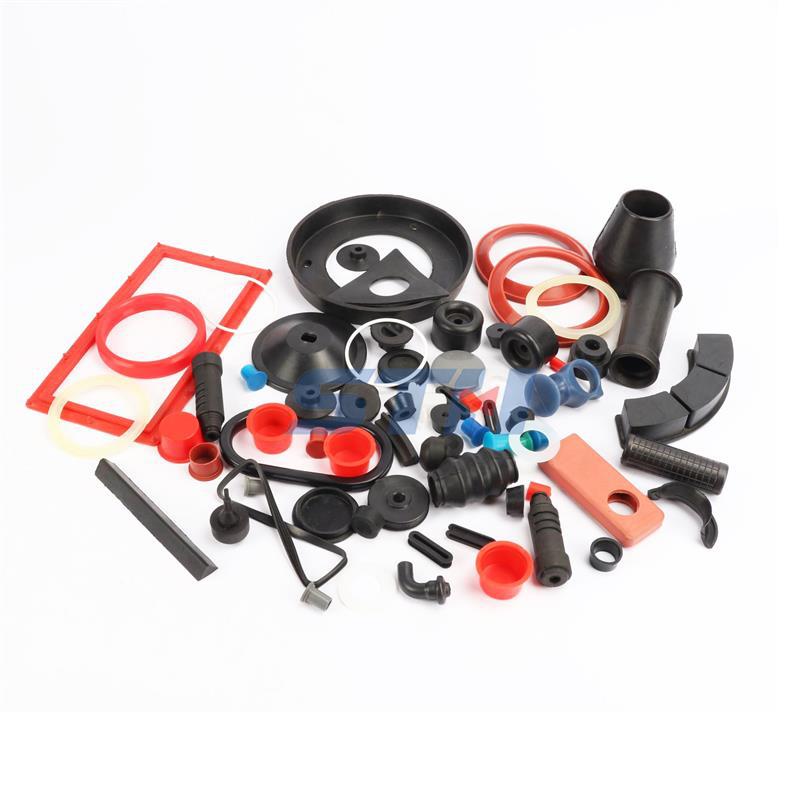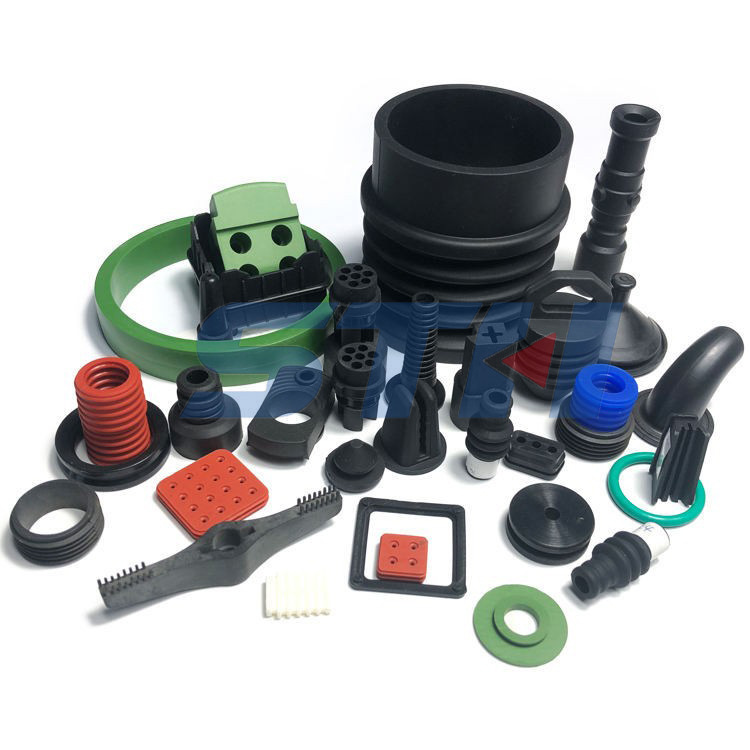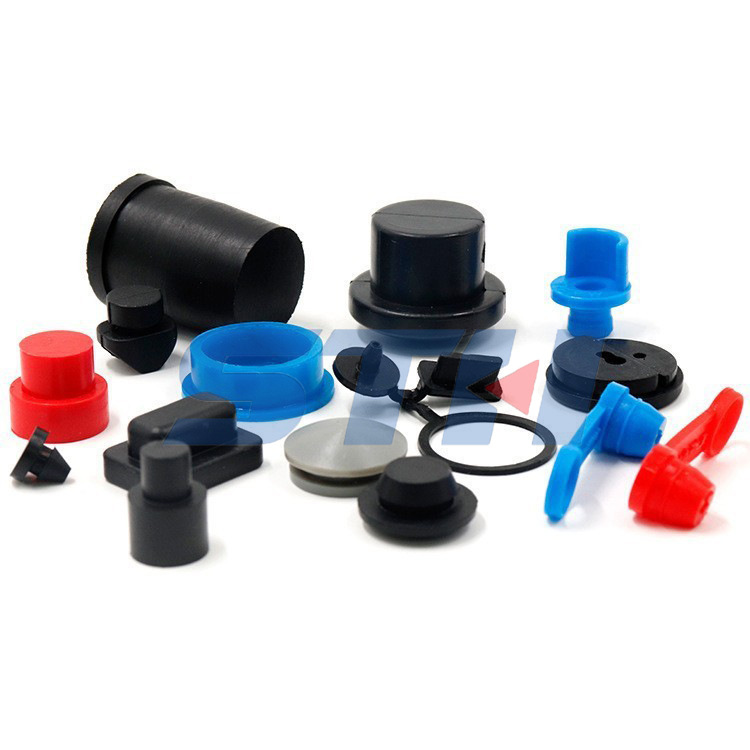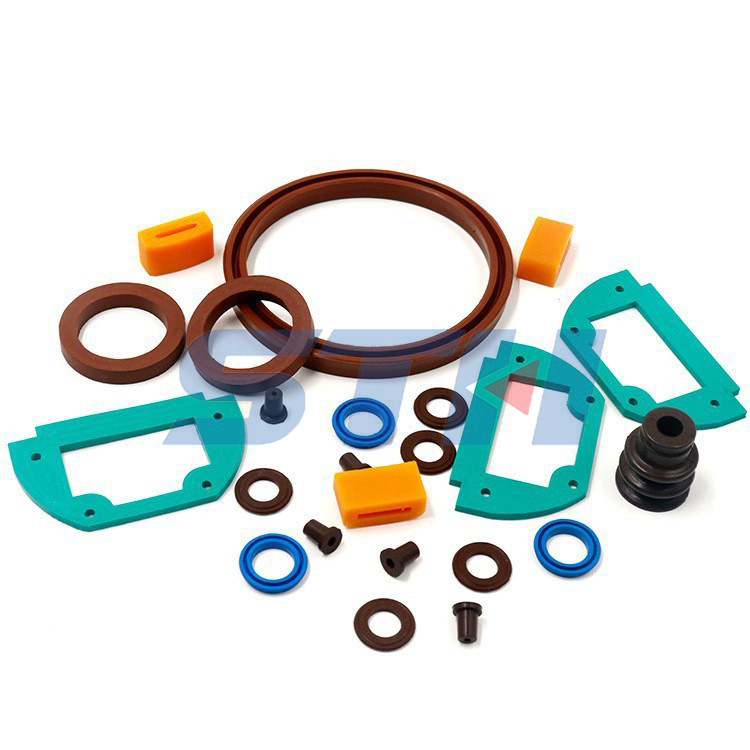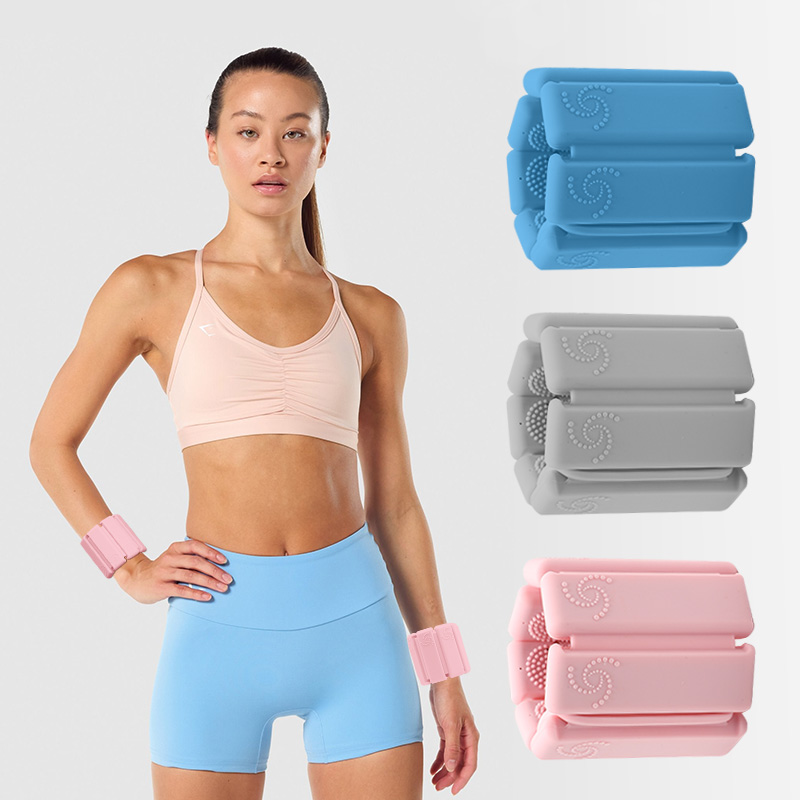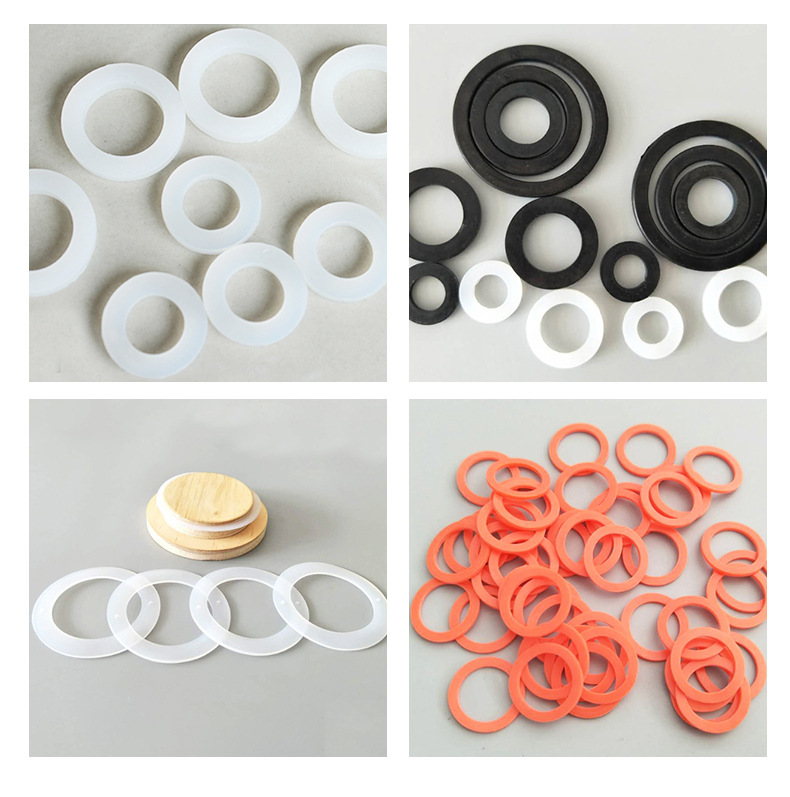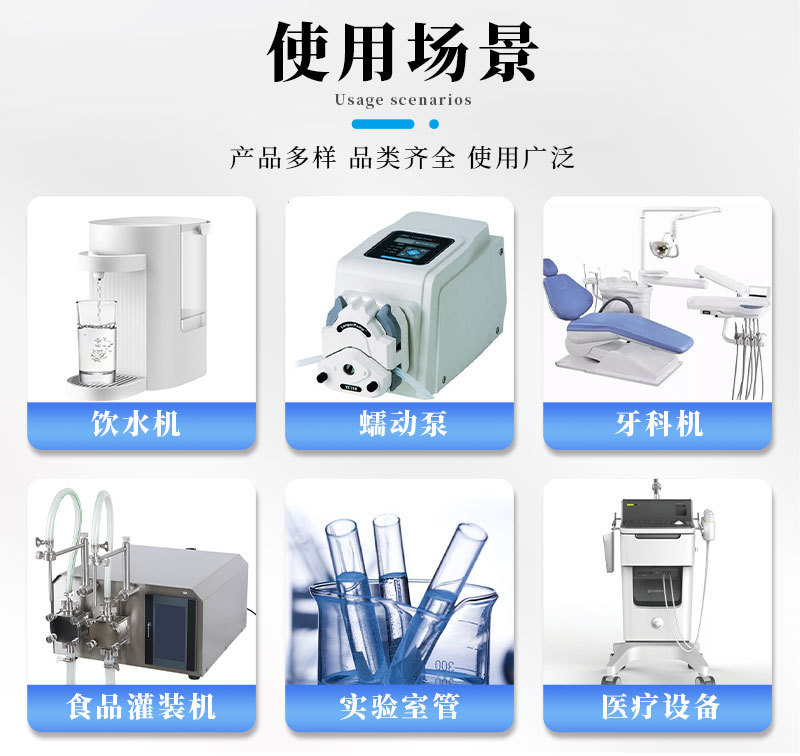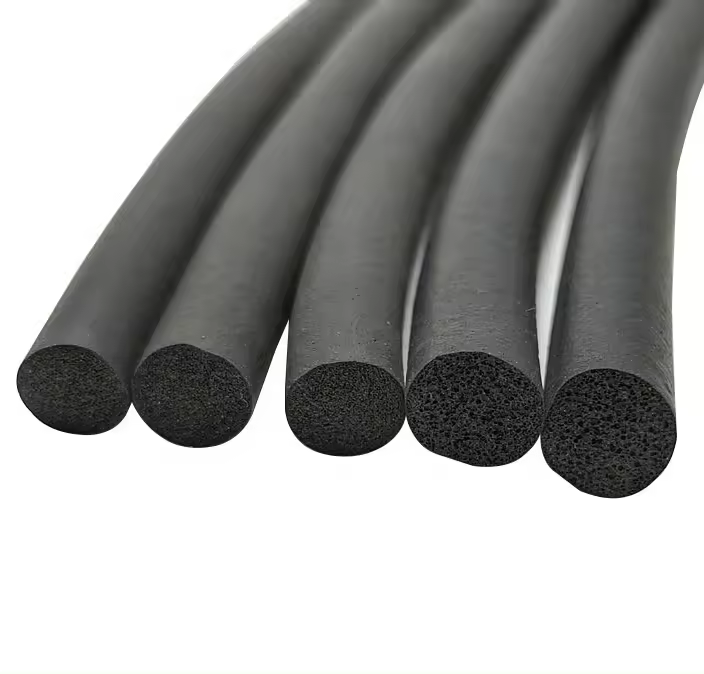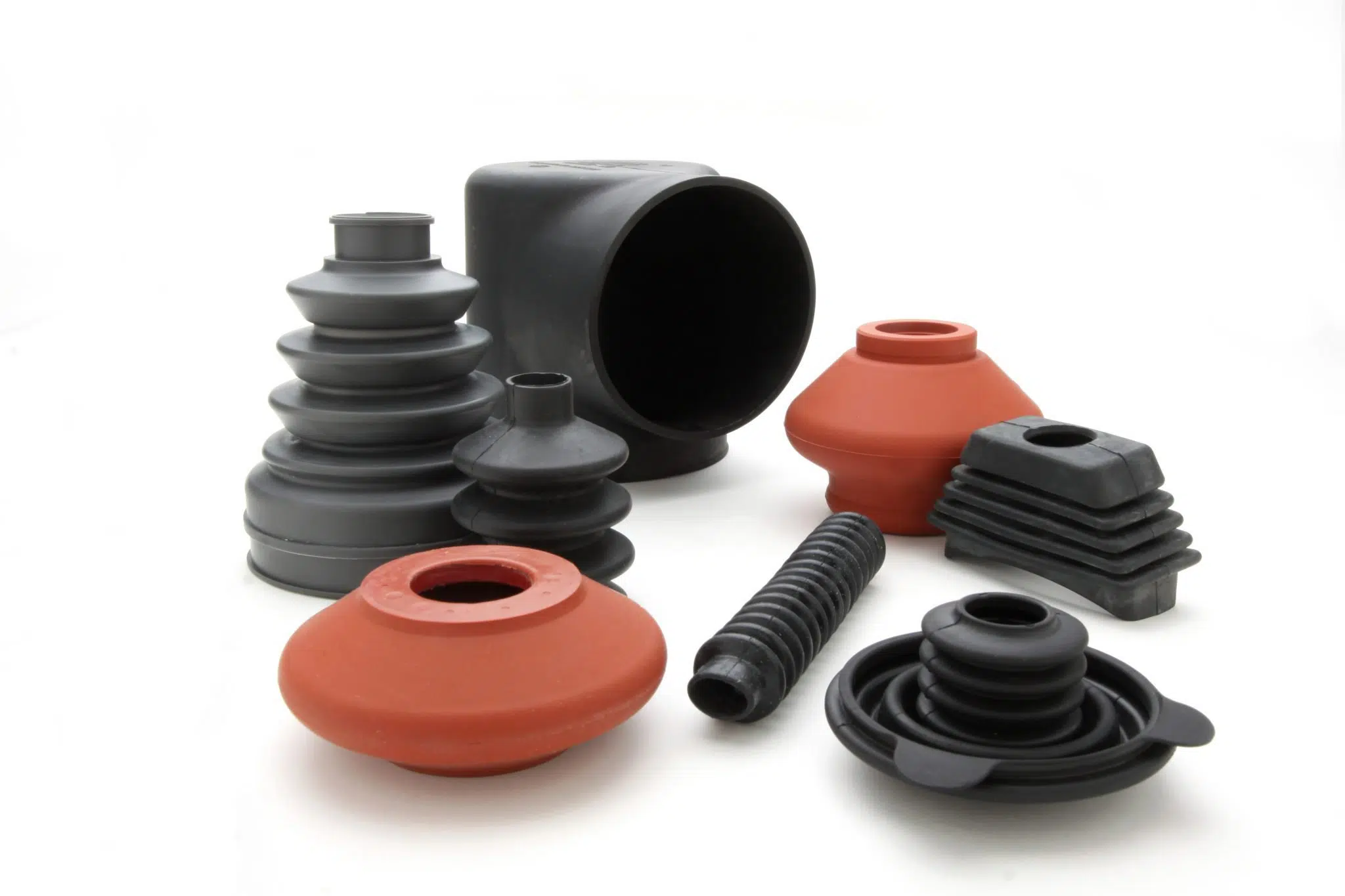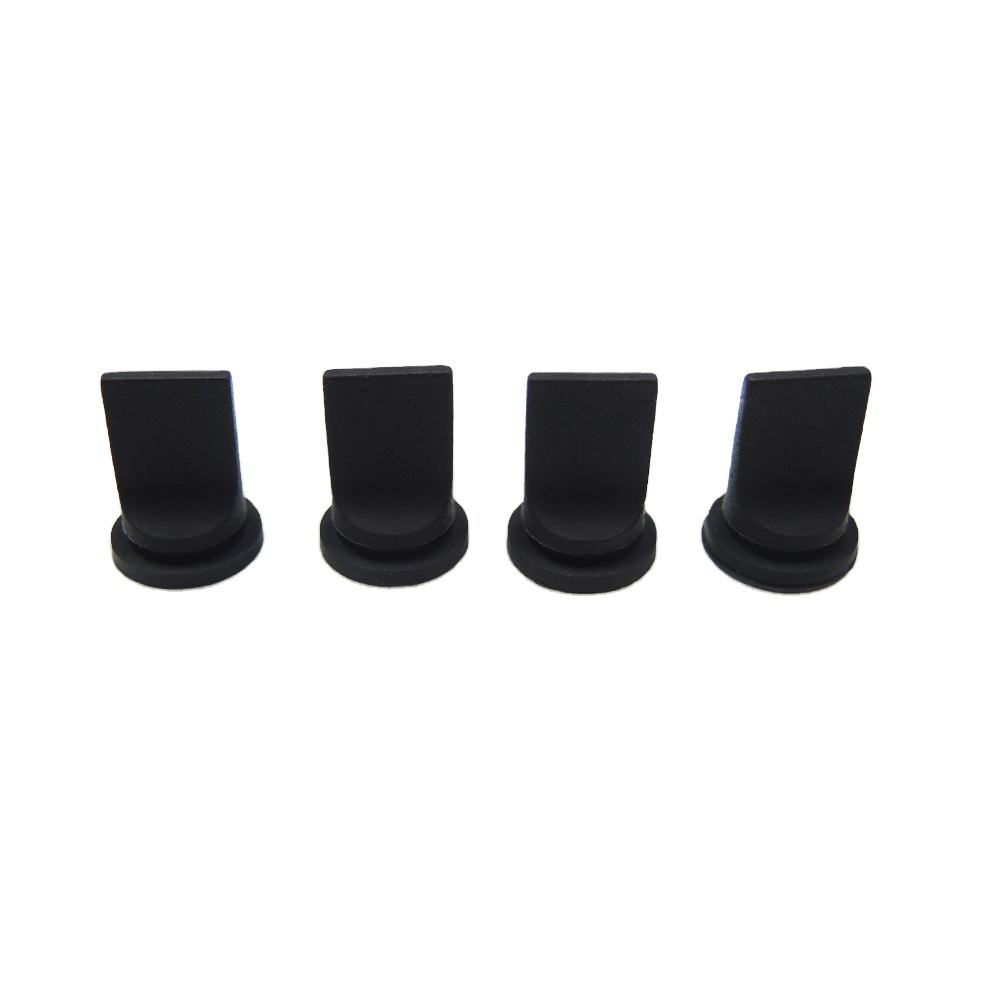Product Range & Technical Specifications
- Vibration Isolation Mounts
- Construction:Steel core with NR/SBR/EPDM encapsulation
- Key Features:
- 40-80 Shore A hardness range
- Dynamic load capacity up to 5,000 lbs
- 85% vibration isolation efficiency
- Applications:Heavy machinery, automotive powertrains, industrial equipment
- Hydraulic Seals & Grommets
- Construction:Precision-machined metal carriers with FKM/NBR bonding
- Key Features:
- Pressure ratings to 10,000 PSI
- Temperature range -40°F to 400°F (-40°C to 204°C)
- Chemical-resistant formulations
- Applications:Hydraulic cylinders, fluid power systems, offshore equipment
- Anti-Vibration Bushings
- Construction:Multi-layer steel/rubber sandwich design
- Key Features:
- Torsional stiffness customization
- 3-axis vibration damping
- Corrosion-resistant plating options
- Applications:Suspension systems, engine mounts, rail components
- Custom Molded Rubber-Metal Assemblies
- Construction:Customer-specified metals with engineered elastomers
- Key Features:
- Complex geometric configurations
- Multi-material bonding (up to 3 materials)
- Integrated sensor/electronic capabilities
- Applications:Aerospace components, medical devices, robotics
- Conveyor System Components
- Construction:Steel-reinforced rubber impact bars
- Key Features:
- Abrasion-resistant compounds
- Noise reduction up to 15 dB
- Impact resistance to 50 Joules
- Applications:Mining equipment, material handling, packaging lines
Material Technology & Safety Compliance
Bonding Process Excellence
- Surface Preparation:
- Shot blasting (SA 2.5 standard)
- Chemical etching
- Primer application (Chemlok® approved)
- Molding Techniques:
- Compression molding (up to 2000 tons)
- Injection molding for precision parts
- Transfer molding for complex geometries
Material Safety Certifications
- Elastomer Options:
- Food-grade silicone (FDA 21 CFR 177.2600)
- Medical-grade EPDM (USP Class VI)
- REACH-compliant NBR
- Low-outgassing FKM for cleanrooms
- Metal Substrate Options:
- 300 series stainless steel
- Anodized aluminum
- Zinc-nickel plated carbon steel
- Titanium alloys
Industry Compliance
- Automotive:IATF 16949 certified
- Aerospace:AS9100, NADCAP approved
- Food Processing:3-A Sanitary Standards
- Industrial:ISO 9001:2015 certified
- Military:MIL-STD-1523A testing
Custom Engineering Services
Design & Development
- FEA Analysis:Stress/strain simulations
- Prototyping:3D printed molds for concept validation
- Tooling:Precision CNC machined molds
Manufacturing Capabilities
- Bond Strength Testing:500-3000 PSI pull-off requirements
- Dimensional Tolerances:±0.005″ for critical dimensions
- Secondary Operations:
- CNC machining
- Laser etching
- Powder coating
- Electropolishing
Specialized Solutions
- High-Performance Bonding:
- Cryogenic applications (-320°F/-196°C)
- Continuous service at 500°F (260°C)
- Salt spray resistance (1000+ hours)
- Smart Components:
- Embedded strain gauges
- RFID tagging
- Conductive pathways
Installation & Maintenance Protocol
Installation Best Practices
- Surface Preparation:
- Clean mating surfaces with isopropyl alcohol
- Verify proper alignment before assembly
- Torque Specifications:
- Use calibrated torque wrenches
- Follow cross-pattern tightening sequence
- Typically 15-25 ft-lbs for M10 fasteners
- Environmental Considerations:
- Avoid installation below 40°F (4°C)
- Protect from UV exposure during staging
Maintenance Procedures
- Routine Inspection Checklist:
- Visual cracks in rubber (magnification recommended)
- Metal corrosion (especially at bond line)
- Hardness changes (durometer testing)
- Permanent deformation (>10% indicates replacement)
- Cleaning Methods:
- Steam cleaning (max 250°F/121°C)
- Ultrasonic cleaning for small components
- Avoid petroleum-based cleaners on NBR
- Replacement Indicators:
- Visible bond line separation
- 15% reduction in vibration isolation
- Surface spalling or chunking
- 5 years service (severe environments)
Storage & Handling
- Ideal Conditions:
- Temperature: 60-80°F (15-27°C)
- Humidity: 40-60% RH
- Away from electrical motors (ozone)
- Packaging Requirements:
- VCI paper for metal protection
- Non-stick separators
- 12-month shelf life in proper storage
Industry Applications
Transportation Sector
- Railway:Primary suspension elements
- Marine:Shaft seals and mounts
- EV Battery Systems:Impact protection
Industrial Machinery
- Press Tools:Vibration dampers
- Pump Systems:Coupling elements
- Robotics:Flexible joints
Energy Infrastructure
- Wind Turbines:Blade dampers
- Oil & Gas:Christmas tree seals
- Nuclear:Containment gaskets
Conclusion
Our rubber-to-metal bonded products represent the pinnacle of material engineering, combining advanced elastomer formulations with precision metalworking. With extensive customization capabilities and rigorous quality control, we deliver solutions that outperform in the most demanding operational environments. From concept to production, our engineering team partners with clients to develop optimized bonding solutions tailored to specific application requirements.
Contact our technical team today to discuss your rubber-metal bonding challenges!





